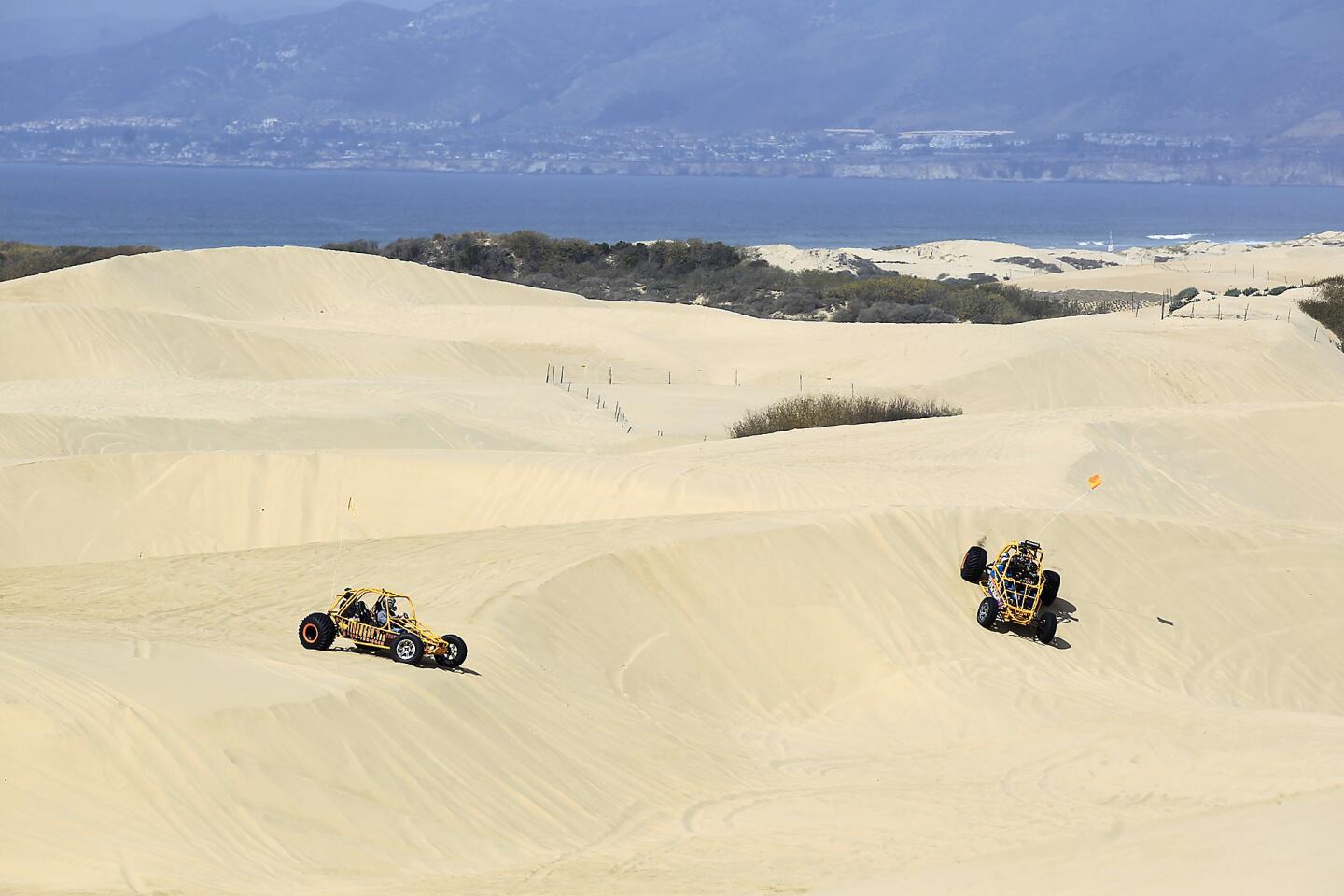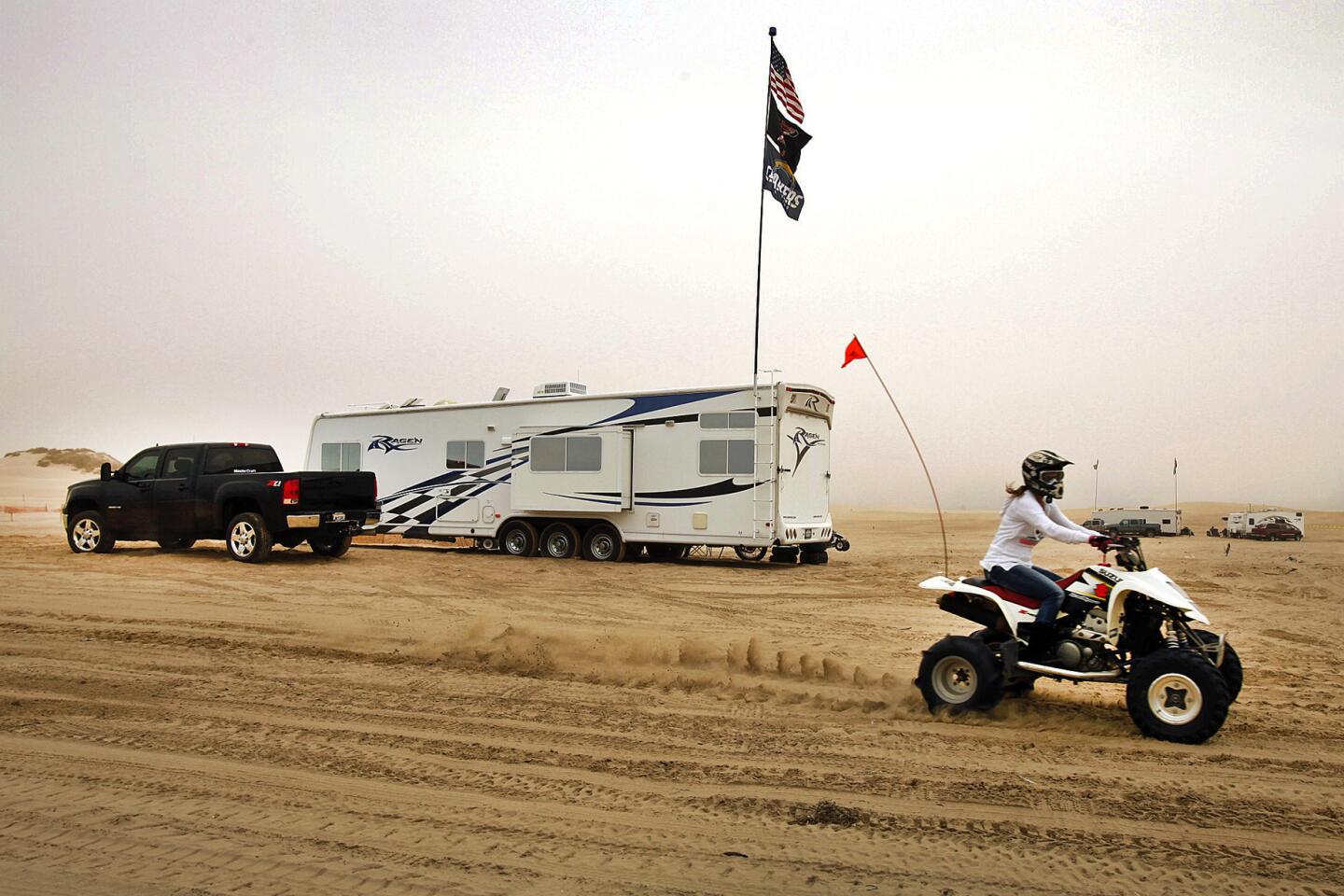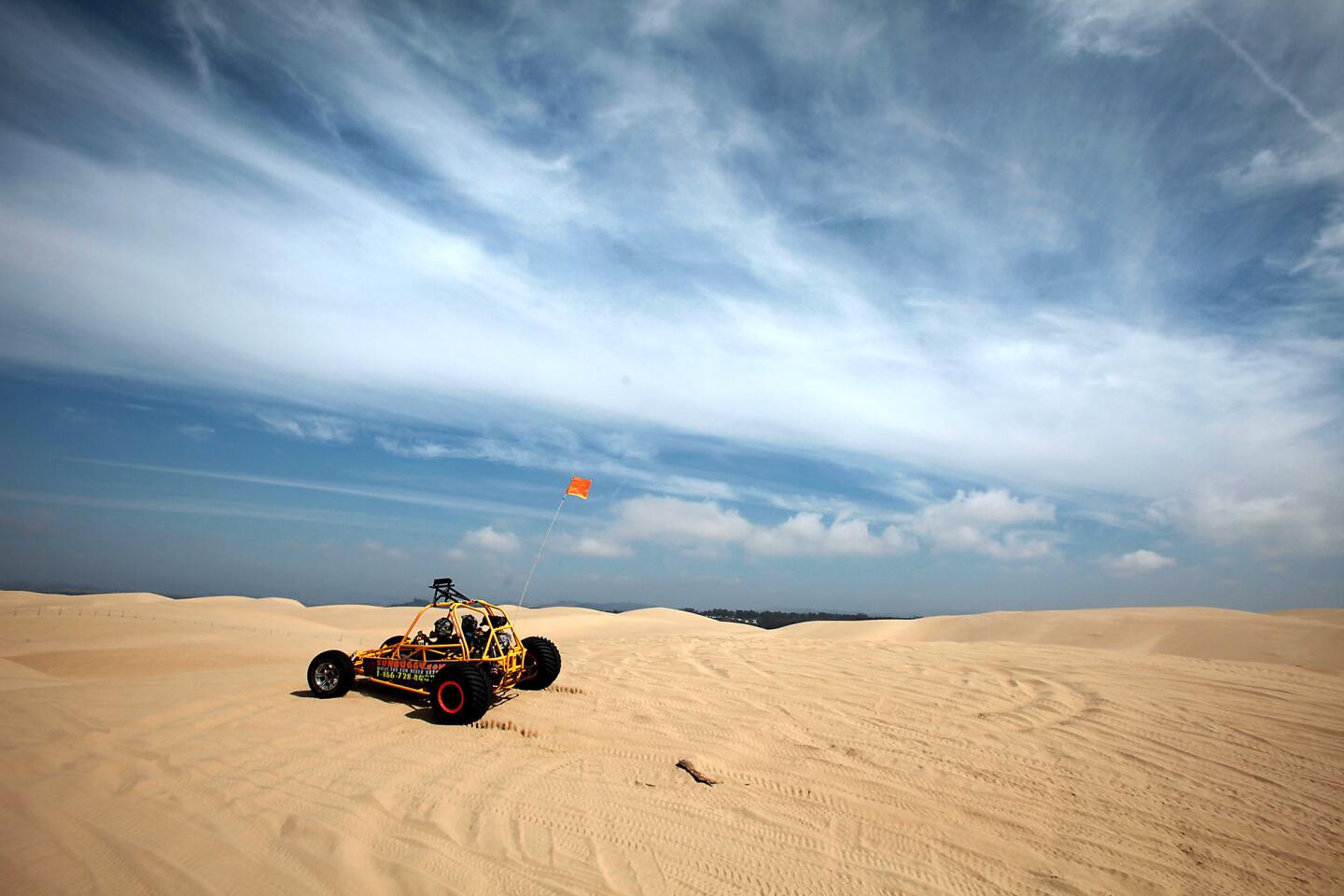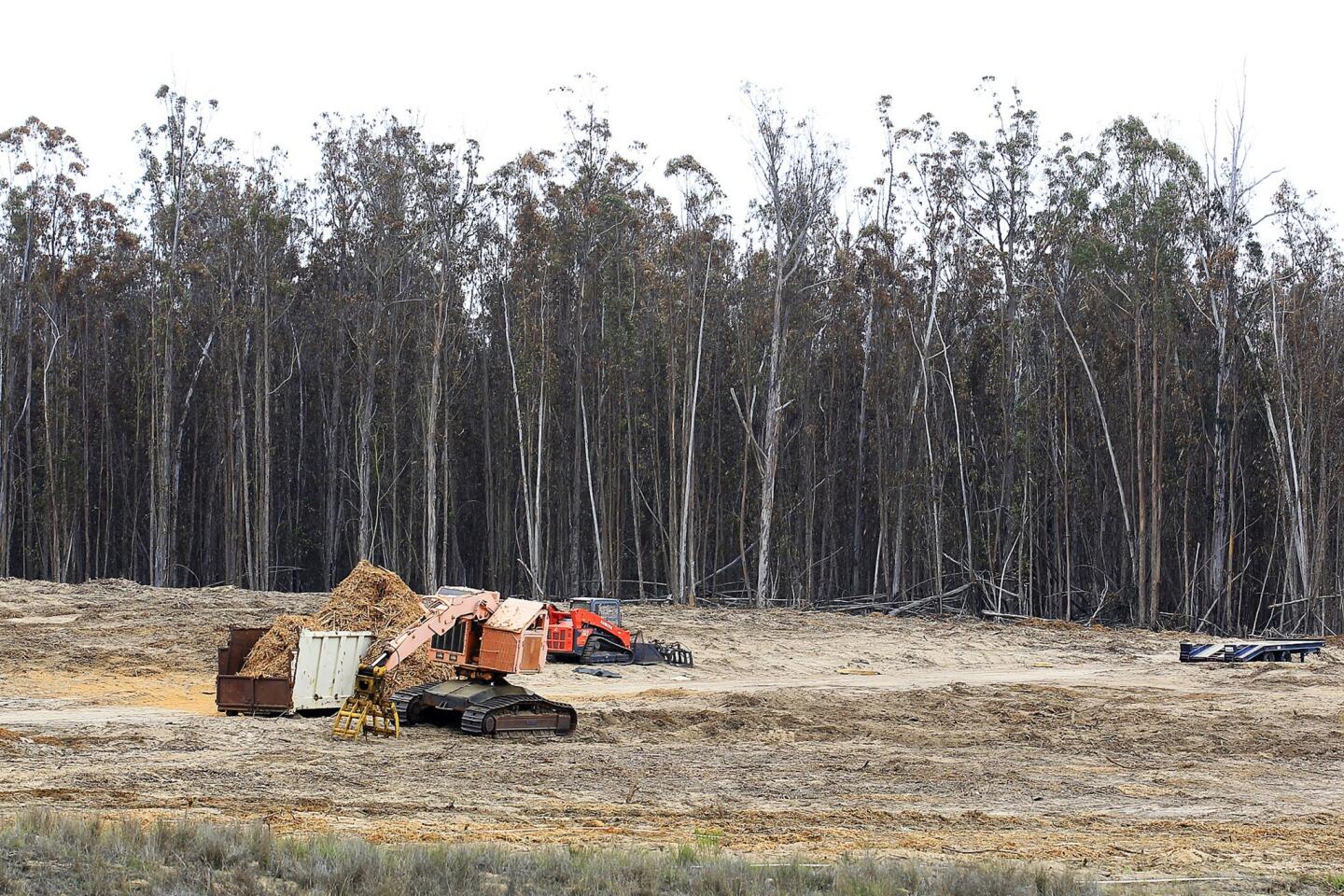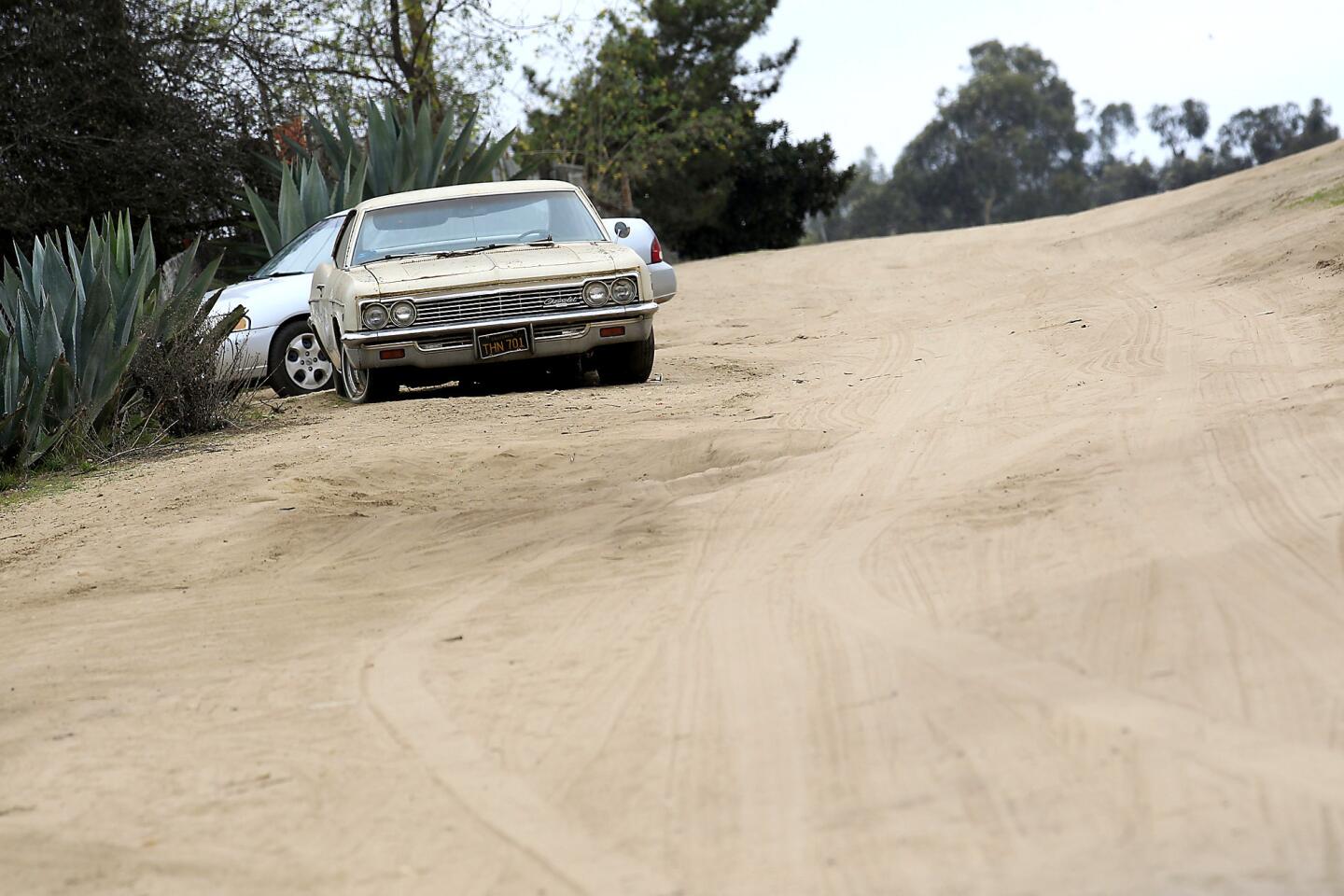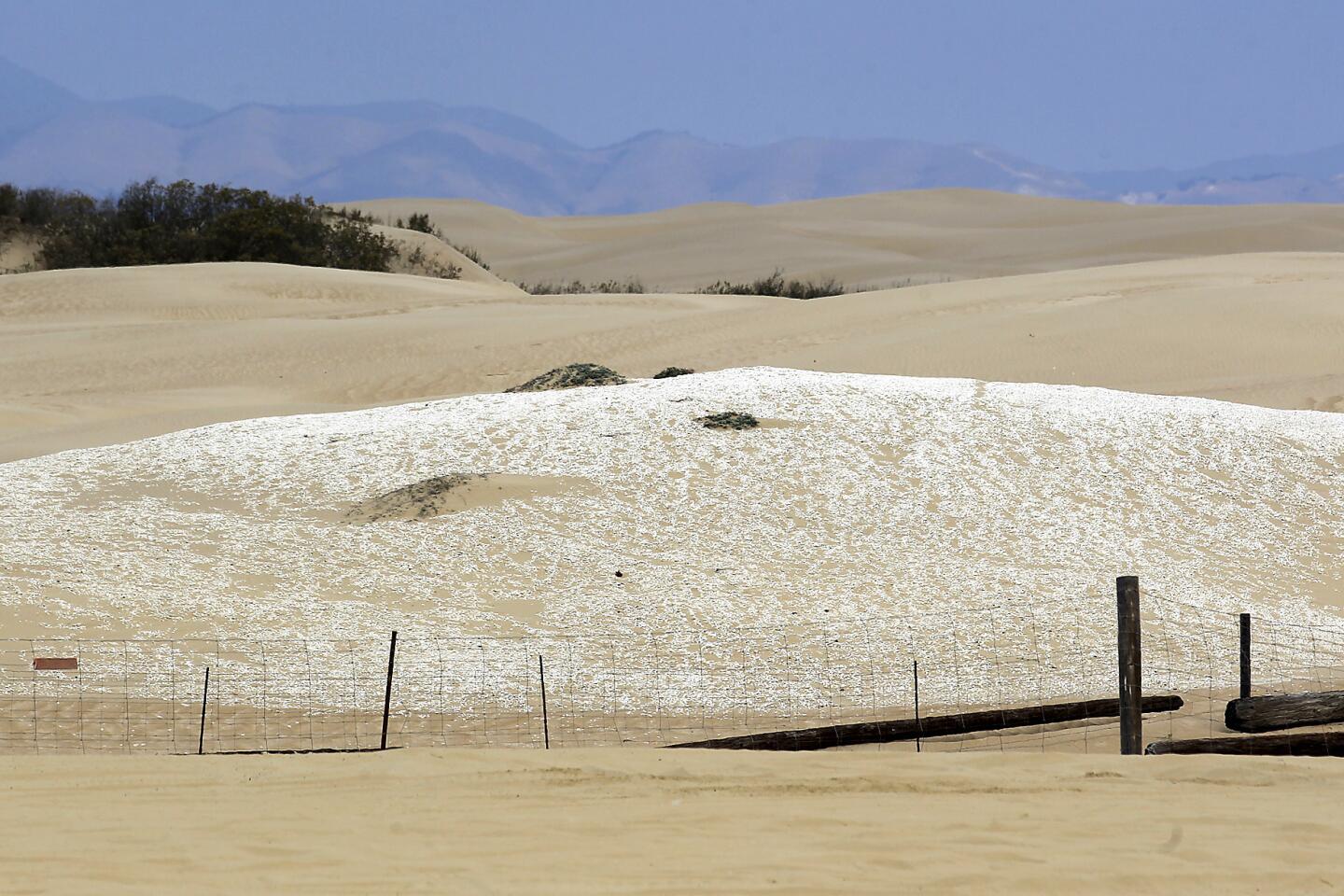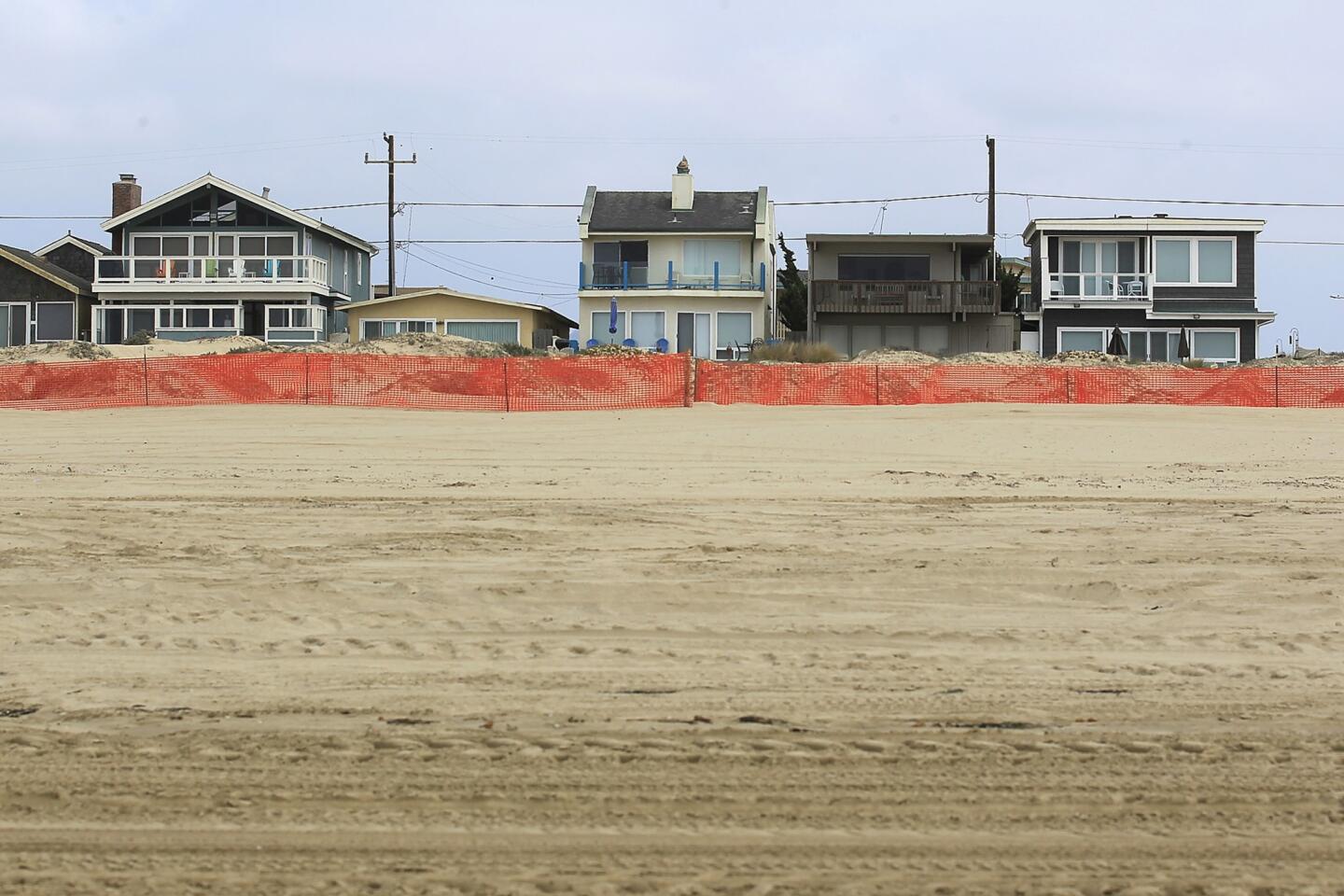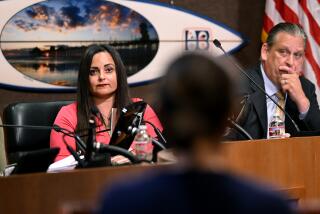Grover Beach mayor embroiled in dust-up over dune vehicles
GROVER BEACH, Calif. — For a long time, even as hotels rose in nearby towns and posh homes went up along groomed fairways down the road, it seemed that this sleepy town might never move beyond an old real estate slogan: “Home of the average man.”
Then Debbie Peterson ran for mayor.
She was a real estate agent, a single mom and a free spirit, known to wear a business jacket with running shoes. She had moxie and business experience. Voters in 2012 chose her by a wide margin. They expected a jolt — but nobody expected this.
Peterson has become a high-profile skeptic of efforts to control and regulate the cloud of dust kicked up by off-road vehicles that have zoomed across the local sand dunes for decades.
The result: She has been labeled “a disgrace” by a former ally. The City Council booted her from an air pollution board. Critics equate her protestations with a localized version of climate change denial — a surprising charge, considering Peterson is a lifelong Democrat and self-described “tree hugger.”
And plans for a $40-million-plus convention center, the largest of its kind between Santa Barbara and Monterey, have been swept up in the fracas. That development was envisioned as an emblem of a new Grover Beach. Its future is now shrouded in a cloud of dust — literally.
“I might die on this hill. But that’s OK,” Peterson said. Retreat, she said, is not an option. Researchers, officials and a judge have pointed to off-road vehicles as a major contributor to an air-quality problem. Peterson doesn’t buy it and says the off-roaders are a scapegoat.
“I won’t stay quiet,” she said. “I can’t.”
The Guadalupe-Nipomo Dunes complex undulates along 18 miles of Central California coastline. It’s a place of diversity and rich history: There are rare species of terns and salamanders. It has been home to Chumash Indians, counterculture and commerce — a group of mystics and off-the-gridders once declared it an epicenter of energy; oil drilling was underway a short time later.
Today, however, the dunes are best known for one thing: People have been driving on them “since the creation of vehicles,” said Dena Bellman, a state parks district specialist. That’s not really hyperbole; Ford Motor Co. held a rally between its northern and southern dealerships here in 1906, two years before the release of the Model T.
A portion of the dunes, the Oceano Dunes State Vehicular Recreation Area, bills itself as the only state park where vehicles can be driven on the beach. Nearly 2 million people visit each year, and the whole enterprise represents $171 million in annual economic impact.
Peterson’s town is the main access point to the recreation area. As go the dunes, many believe, so goes Grover Beach. But some days, Arlene Versaw can see the air she breathes. “That’s not good,” she said.
A former planning commissioner in Grover Beach, and the wife of a former mayor, Versaw moved recently to the nearby Nipomo Mesa. There, hundreds of homes have been built in recent years. And there, particulate pollution routinely exceeds state standards. Residents wipe films of fine sand from patio furniture and say they are forced to change air filters frequently.
“You’re kind of trapped in your home,” Versaw said.
No one disputes that the region has an air-quality problem — including Mayor Debbie Peterson.
“You can hear it — my throat’s getting scratchy,” Peterson said the other day as she drove through one of the new developments, where some homes go for more than $1 million. Peterson, a real estate agent by trade, travels the region extensively. This is the only area, she said, where she is forced to use an inhaler.
“I don’t mean to be dramatic,” she said. “But it’s dramatic when your lungs hurt.”
The issue is not whether there is dust — it’s where the dust comes from. Many in the area believe that issue is settled. Peterson is not among them.
Researchers have signed off on the same basic conclusions, Versaw said — that there is a dust problem, that the dust comes from the dunes and that the vehicles contribute to the pollution. Last year, a judge reviewed the primary study and said it was clear: Off-road vehicles are “a major contributor to the problem of airborne particulate matter.”
“We have enough evidence to hold up in a court of law — it already has,” said San Luis Obispo County Supervisor Adam Hill.
In 2011, the county Air Pollution Control District approved a rule seeking to reduce the particles that blow from the dunes into nearby residential areas. The “dust rule,” as it is known, required the dunes park to meet state air-quality standards by 2015 or face $1,000-per-day fines.
Peterson didn’t like it — the science, the implications, the philosophy. The dust rule was government overreach, she said, just one arm of government taking money from another. The science, she felt, was not settled; it had failed to take into account new washes of sediment carried onto area beaches each year, for instance.
She said the real sources of the problem were construction sites that failed to water down newly turned fields or cover piles of soil and sand; and eucalyptus groves that were felled to make way for construction, though they were supposed to have been buffers against the wind.
“I believe that the dunes are a source of dust. I believe there are other sources, too — and I don’t believe the vehicles are a driving factor,” she said.
The events moved quickly after Peterson was elected. In January 2013, she lobbied to be appointed to the local Air Pollution Control District. Five months later, she was circulating a petition demanding the repeal of the dust rule. And six months after that, the City Council removed her from the air pollution board.
That wasn’t the end of it. Peterson wants back on the board. But many of her former political allies remain aghast at what they view as a willing disregard of solid science.
Hill and Peterson, both moderate, pro-business Democrats, once campaigned for each other. But Hill lobbied for Peterson’s removal from the air pollution board and sent her fellow council members an email labeling her “a disgrace.”
“It is unfortunately reminiscent of climate change denial,” Hill said.
Peterson’s stance put her squarely in the camp of Friends of Oceano Dunes, an influential group of off-road vehicle enthusiasts. And when she was dumped from the air pollution board, “They were not happy,” she said.
For months, Peterson had been fighting for local and state approval of a 150-room beachfront hotel and conference center at the edge of Grover Beach. And she was winning.
“Friends,” as the organization is known locally, had long voiced concerns about the development and its potential impact on the public’s use of the dunes. With Peterson’s election and alliance, the group had put its grievances at bay, she said.
But in an email, the group’s president, Jim Suty, called Peterson’s removal from the air pollution board “the straw that broke the camel’s back.” His group, Peterson said, is now poised to fight vigorously against the development of the convention center.
Peterson had hoped that the convention center could open in 2016 but said the group’s appeal to state regulators could toss a lengthy and costly wrench in those plans.
Peterson is an entrepreneur who once used her mother’s recipes to build a successful large-scale bakery in Scotland, where she lived for a time. It was that business experience that helped boost her to office. The convention center, which people had been talking about for years, was supposed to be the catalyst for economic growth in Grover Beach.
“I’m not at all happy with their actions,” she said.
And in the latest twist, a group of citizens concerned about air quality filed a lawsuit late last month. The suit does not seek to ban vehicles from the dunes but asks a court to force local officials to take remediation steps in the dunes, such as revegetation.
Peterson said she’s not sure that the convention center will ever be built. She’s up for reelection in November and suddenly staving off a bombardment of criticism. But she’s not about to repent.
She turned her sedan back from the far-flung, newer developments toward her home in Grover Beach. She knows this much, she said: “I wouldn’t live out here. I’d be miserable.”
More to Read
Start your day right
Sign up for Essential California for news, features and recommendations from the L.A. Times and beyond in your inbox six days a week.
You may occasionally receive promotional content from the Los Angeles Times.
